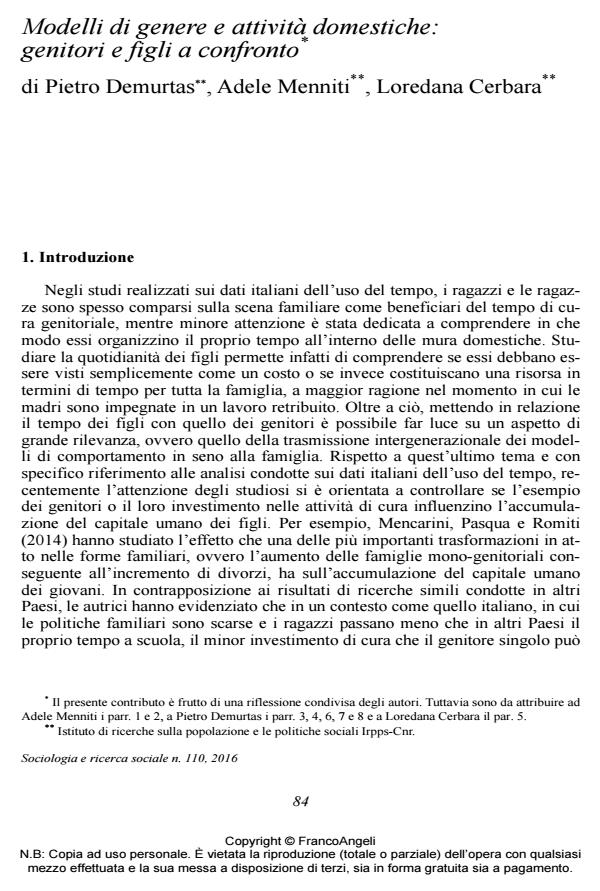Gender Roles and Domestic Chores: a Comparison among Parents and Children
Journal title SOCIOLOGIA E RICERCA SOCIALE
Author/s Pietro Demurtas, Adele Menniti, Loredana Cerbara
Publishing Year 2016 Issue 2016/110
Language Italian Pages 31 P. 84-114 File size 293 KB
DOI 10.3280/SR2016-110006
DOI is like a bar code for intellectual property: to have more infomation
click here
Below, you can see the article first page
If you want to buy this article in PDF format, you can do it, following the instructions to buy download credits

FrancoAngeli is member of Publishers International Linking Association, Inc (PILA), a not-for-profit association which run the CrossRef service enabling links to and from online scholarly content.
In the light of changes occurred in gender roles over the years, it seems useful to investigate whether the new generations adopt more equal gender roles at home and if the parents’ daily organization affects the participation of their children to domestic chores. Using data from the Istat survey on Time Use carried out in 2008-9, the paper examines some hypotheses related to the well-known approaches (gender ideology, modelling, time availability, stress crossover). The results, while showing a limited contribution of the sons in domestic work, highlight the greater accountability of the daughters, thus confirming the family as a context of reproduction of traditional gender roles. At the same time, it was noticed that the father has an important educational role: both male and female children are more involved when their fathers are engaged in the more stereo-typically female tasks. Moreover, children’s sensitivity to the parental stress appears to be mediated by gender: male children increase the time devoted to housework when their fathers are stressed out and so do the females with reference to their mothers
- Essere padri: il coinvolgimento nelle vite delle figlie e dei figli in base ai dati OCSE-PISA Brunella Fiore, Alessandra Decataldo, Noemi Novello, in SICUREZZA E SCIENZE SOCIALI 3/2022 pp.79
DOI: 10.3280/SISS2022-003006
Pietro Demurtas, Adele Menniti, Loredana Cerbara, Modelli di genere e attività domestiche: genitori e figli a confronto in "SOCIOLOGIA E RICERCA SOCIALE " 110/2016, pp 84-114, DOI: 10.3280/SR2016-110006